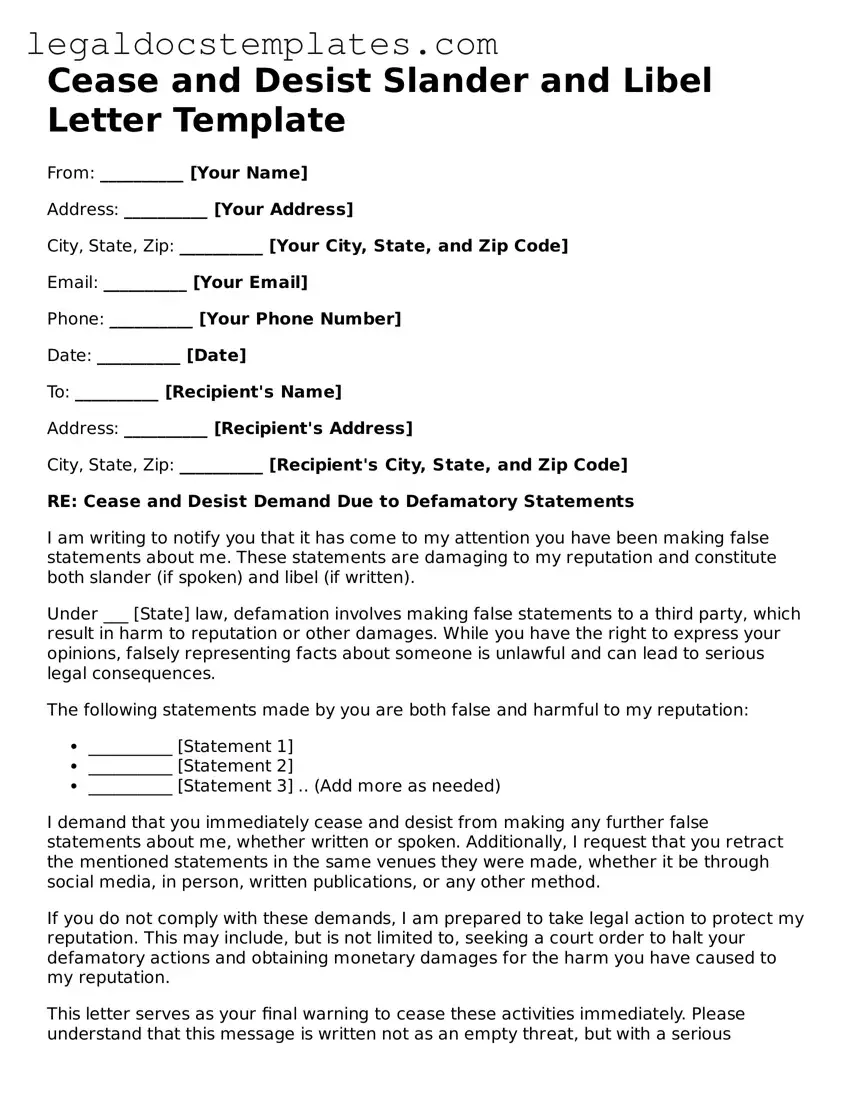Cease and Desist Slander and Libel Letter Template
From: __________ [Your Name]
Address: __________ [Your Address]
City, State, Zip: __________ [Your City, State, and Zip Code]
Email: __________ [Your Email]
Phone: __________ [Your Phone Number]
Date: __________ [Date]
To: __________ [Recipient's Name]
Address: __________ [Recipient's Address]
City, State, Zip: __________ [Recipient's City, State, and Zip Code]
RE: Cease and Desist Demand Due to Defamatory Statements
I am writing to notify you that it has come to my attention you have been making false statements about me. These statements are damaging to my reputation and constitute both slander (if spoken) and libel (if written).
Under ___ [State] law, defamation involves making false statements to a third party, which result in harm to reputation or other damages. While you have the right to express your opinions, falsely representing facts about someone is unlawful and can lead to serious legal consequences.
The following statements made by you are both false and harmful to my reputation:
- __________ [Statement 1]
- __________ [Statement 2]
- __________ [Statement 3] .. (Add more as needed)
I demand that you immediately cease and desist from making any further false statements about me, whether written or spoken. Additionally, I request that you retract the mentioned statements in the same venues they were made, whether it be through social media, in person, written publications, or any other method.
If you do not comply with these demands, I am prepared to take legal action to protect my reputation. This may include, but is not limited to, seeking a court order to halt your defamatory actions and obtaining monetary damages for the harm you have caused to my reputation.
This letter serves as your final warning to cease these activities immediately. Please understand that this message is written not as an empty threat, but with a serious intention to pursue all legal remedies available should you disregard this warning.
I expect a written response from you acknowledging receipt of this letter and outlining how you intend to comply with these demands. Please respond by __________ [Response Date].
Thank you for your immediate attention to this matter. I sincerely hope that we can resolve this issue swiftly and amicably without the need for further legal action.
Sincerely,
__________ [Your Name]
